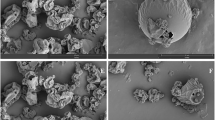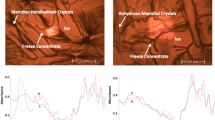ABSTRACT
Purpose
An unknown UV 280 nm absorbing peak was observed by SEC for protein stability samples formulated in L-histidine during a stress stability study. Understanding the source would enhance the confidence in the SEC results. We identified the unknown peak, studied the cause, and evaluated ways to eliminate it.
Methods
The unknown peak was fractionated by preparative size exclusion chromatography separations, and subsequently analyzed by Hydrophilic Interaction Chromatography (HILIC) coupled with Time-of-Flight (TOF) high resolution mass spectrometry. The possible degradation was also studied with the presence of different excipients, including metal cations, chelating agents, and amino acids.
Results
The unknown peak was identified to be trans-urocanic acid, a degradant of histidine, based on evidences from HILIC retention time, UV profile, accurate mass measurement, trans-cis isomerization, and pI measurement. The degradation from histidine to urocanic acids was not affected by the presence of Fe2+, but slightly activated by Mn2+. The chelating agents, EDTA and DTPA, counteracted the Mn2+ effects. This degradation was evidenced to be caused by contamination. Adding alanine or cysteine as an excipient was found to reduce this degradation by 97 and 98%, respectively.
Conclusions
L-histidine formulation buffer can be contaminated to induce histidine degradation to trans-urocanic acid, which shows a large UV 280 nm absorbing peak at the total permeation volume under SEC conditions. Amino acids alanine and cysteine effectively inhibit this histidine degradation.








Similar content being viewed by others
Abbreviations
- 2-IA:
-
2-imidazolecarboxaldehyde
- 4-IA:
-
4(5)-imidazolecarboxaldehyde
- DTPA:
-
Diethylene triamine pentaactic acid
- EDTA:
-
Ethylenediamine teracetic acid
- TBHP:
-
Tert-butylhydroperoxide
References
Kamerzell TJ, Esfandiary R, Joshi SB, Middaugh CR, Volkin DB. Protein–excipient interactions: mechanisms and biophysical characterization applied to protein formulation development. Adv Drug Deliv Rev. 2011;63(13):1118–59.
Ajmera A, Scherließ R. Stabilisation of proteins via mixtures of amino acids during spray drying. Int J Pharm. 2014;463(1):98–107.
Chen B, Bautista R, Yu K, Zapata G, Mulkerrin M, Chamow S. Influence of histidine on the stability and physical properties of a fully human antibody in aqueous and solid forms. Pharm Res. 2003;20(12):1952–60.
Katayama DS, Nayar R, Chou DK, Valente JJ, Cooper J, Henry CS, et al. Effect of buffer species on the thermally induced aggregation of interferon-tau. J Pharm Sci. 2006;95(6):1212–26.
Österberg T, Fatouros A, Mikaelsson M. Development of a freeze-dried albumin-free formulation of recombinant factor VIII SQ. Pharm Res. 1997;14(7):892–8.
Tian F, Sane S, Rytting JH. Calorimetric investigation of protein/amino acid interactions in the solid state. Int J Pharm. 2006;310(1–2):175–86.
Sane SU, Wong R, Hsu CC. Raman spectroscopic characterization of drying-induced structural changes in a therapeutic antibody: correlating structural changes with long-term stability. J Pharm Sci. 2004;93(4):1005–18.
Subramanian M, Flores-Nate A, Fanget L, Lam V, Kaisheva E. Effect of histidine oxidation on the loss of potency of a humanized monoclonal antibody. AAPS PharmSci. 2001;3(S1):1884.
Akers MJ. Excipient–drug interactions in parenteral formulations. J Pharm Sci. 2002;91(11):2283–300.
Stroop SD, Conca DM, Lundgard RP, Renz ME, Peabody LM, Leigh SD. J Pharm Sci. 2011;100(12):5142–55.
Uchida K. Histidine and lysine as targets of oxidative modification. Amino Acids. 2003;25(3–4):249–57.
Tomita M, Irie M, Ukita T. Sensitized photooxidation of histidine and its derivatives. Products and mechanism of the reaction. Biochemistry. 1969;8(12):5149–60.
Kang P, Foote CS. Photosensitized oxidation of 13C,15 N-labeled imidazole derivatives. J Am Chem Soc. 2002;124(32):9629–38.
Dakin HD. The oxidation of amido-acids with the production of substances of biological importance. J Biol Chem. 1906;1(2):171–6.
Amici A, Levine RL, Tsai L, Stadtman ER. Conversion of amino acid residues in proteins and amino acid homopolymers to carbonyl derivatives by metal-catalyzed oxidation reactions. J Biol Chem. 1989;264(6):3341–6.
Uchida K, Kawakishi S. Identification of oxidized histidine generated at the active site of Cu, Zn-superoxide dismutase exposed to H2O2. Selective generation of 2-oxo-histidine at the histidine 118. J Biol Chem. 1994;269(4):2405–10.
Schöneich C. Mechanisms of metal-catalyzed oxidation of histidine to 2-oxo-histidine in peptides and proteins. J Pharm Biomed Anal. 2000;21(6):1093–7.
Mason B, McCracken M, Bures E, Kerwin B. Oxidation of free l-histidine by tert-butylhydroperoxide. Pharm Res. 2010;27(3):447–56.
Raistrick H. On a new type of chemical change produced by bacteria. The conversion of histidine into urocanic acid by bacteria of the coli-typhosus group. Biochem J. 1917;11(1):71–7.
Kurogochi Y, Fukui Y, Nakagawa T, Yamamoto I. A note on cis-urocanic acid. Jpn J Pharmcol. 1957;6(2):147–52.
Lucas K, Maloney K. Methods for inhibiting yellow color formation in a composition. US Patent US20120183531.
Mehler AH, Tabor H. Deamination of histidine to form urocanic acid in liver. J Biol Chem. 1953;201(2):775–84.
Givot IL, Smith TA, Abeles RH. Studies on the mechanism of action and the structure of the electrophilic center of histidine ammonia lyase. J Biol Chem. 1969;244(23):6341–53.
Klee CB. Metal activation of histidine ammonia-lyase: metal ion-sulfhydryl group relationship. J Biol Chem. 1972;247(5):1398–406.
Tabor H, Mehler AH, Hayaishi O, White J. Urocanic acid as an intermediate in the enzymatic conversion of histidine to glutamic and formic acid. J Biol Chem. 1952;196(1):121–8.
Kraml M, Bouthillier LP. The conversion of urocanic acid to glutamic acid in the intact rat. Can J Biochem Physiol. 1955;33(4):590–8.
Xu FF, Imlay JA. Silver(I), mercury(II), cadmium(II), and zinc(II) target exposed enzymic iron-sulfur clusters when they toxify Escherichia coli. Appl Environ Microbiol. 2012;78(10):3614–21.
ACKNOWLEDGMENTS AND DISCLOSURES
The authors would like to thank Dr. Adrienne Tymiak, Bethanne Warrack and Dr. Daniel O’Malley for reviewing the manuscript and providing helpful suggestions.
Author information
Authors and Affiliations
Corresponding author
Rights and permissions
About this article
Cite this article
Wang, C., Yamniuk, A., Dai, J. et al. Investigation of a Degradant in a Biologics Formulation Buffer Containing L-Histidine. Pharm Res 32, 2625–2635 (2015). https://doi.org/10.1007/s11095-015-1648-8
Received:
Accepted:
Published:
Issue Date:
DOI: https://doi.org/10.1007/s11095-015-1648-8




